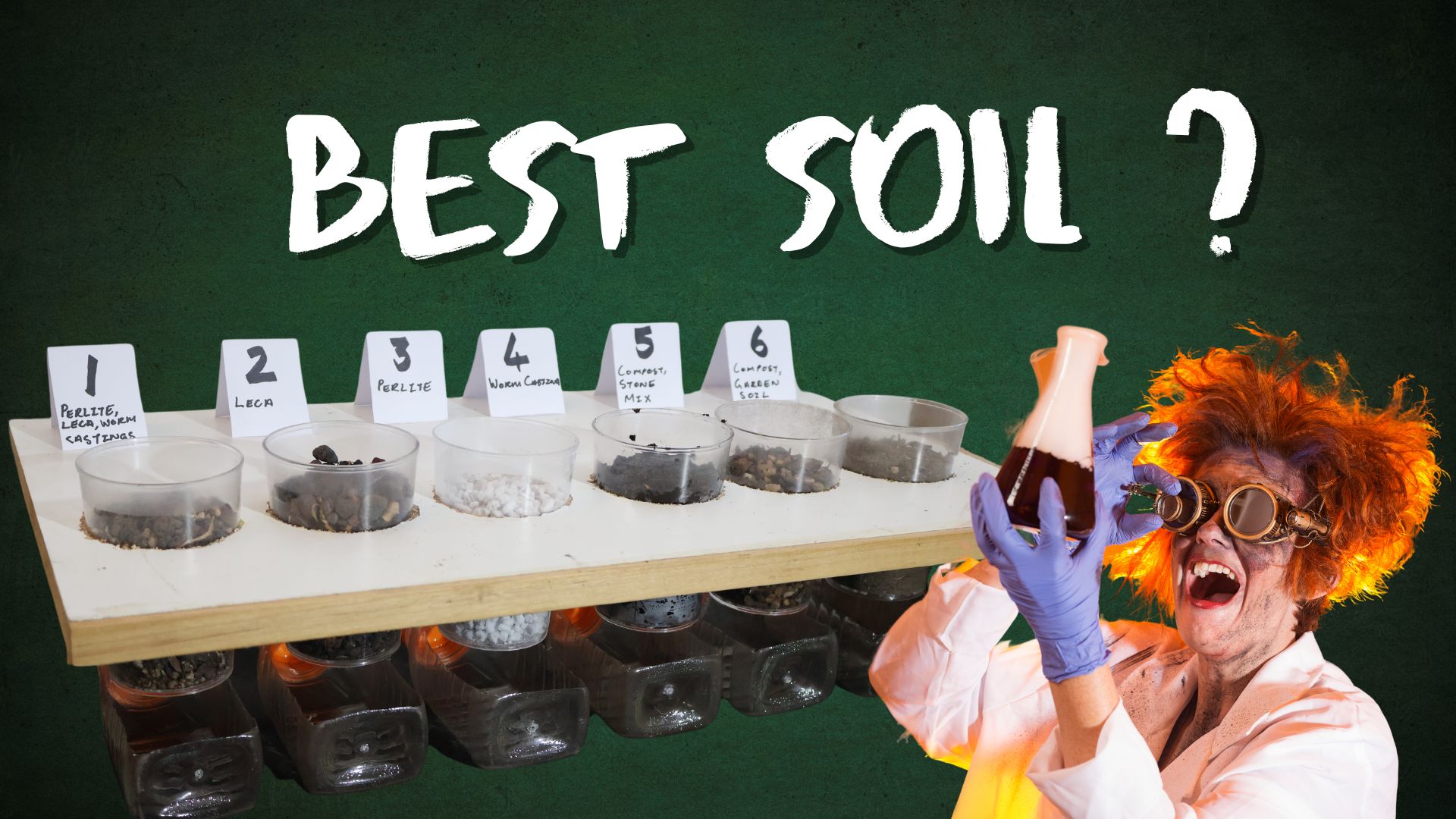Welcome back, fellow bonsai enthusiasts! Today, I’m thrilled to share with you the fascinating results of an experiment I conducted to delve into the water holding capacities of different soil types commonly used for bonsai cultivation. This experiment was born out of a need to understand why one of my Liquid Amber bonsai trees was struggling despite receiving adequate care. Through this experiment, I aimed to shed light on how various soil compositions affect water retention, ultimately helping bonsai enthusiasts like you optimize your soil mixtures for healthier, thriving trees.
To kickstart this experiment, I gathered six different soil types that I frequently use in my bonsai practice.
Perlite:
- Perlite is a lightweight granular material that’s white in color. It looks and feels like little bits of polystyrene but is actually made from expanded volcanic glass, heated to 1000°C until it ‘pops’ (like popcorn) to many times its original size. It’s lightweight, sterile, and easy to handle, and is long-lasting.
LECA:
- Lightweight expanded clay aggregate (LECA) or expanded clay is a lightweight aggregate made by heating clay to around 1,200 °C (2,190 °F) in a rotary kiln. The heating process causes gasses trapped in the clay to expand, forming thousands of small bubbles and giving the material a porous structure.
Worm Castings:
- Worm castings are an organic form of fertilizer produced from earthworms. Also known as vermicast, worm castings manure is essentially earthworm waste, otherwise known as worm poo. As these creatures eat through compost, their waste creates an optimal soil enricher.
Perlite, LECA, and Worm Castings Mix:
- This is the current soil mixture that I am using on all of my bonsai trees. I mix 4 parts Perlite, 4 parts LECA, and 1 part worm castings to get this mixture.
Compost and Stone Mix:
- A mixture of well-decomposed compost and washed stone. I mix 6 parts of compost with 8 parts of stone.
Compost and Garden Soil Mix:
- A mixture of well-decomposed compost and soil I dug up in the garden from my vegetable garden. I mix this 1 part compost with 1 part garden soil.
Each soil type was placed in individual clear plastic cups, ensuring consistency in volume. Additionally, I drilled eight holes in the bottom of each cup to mimic drainage conditions. Before adding the soil, I weighed the cups to establish a baseline weight, crucial for accurate measurements throughout the experiment.

Week 1: Initial Watering and Observation
The first week of the experiment involved daily watering of the soil mixtures with 100ml of water. After each watering session, I measured the weight of the soil to monitor water absorption.

I started off with a Perlite, Leca and worm castings with a start weight of 57g, Leca with a start weight of 122g, Perlite with a start weight of 19g, Worm castings with astart weight of 165g, Compost and stone with a start weight of 153g and finally with compost and garden soil with a start weight of 175g.
After the first 100ml of water was added the weight of the soil mixture went up dramatically. The results were as follows: Perlite, Leca and worm castings increased by 53%, Leca increased by 29%, Perlite increased by 279%, Worm Castings increased by 8%, Compost and stone increased by 13%, Compost and garden soil increased by 33%.
I continued adding 100ml of water daily for the next 6 days. At the day 4 mark most of the soil type weight increase tapered down into single % gains per day. At the end of day 7 concluding the first week of the experiment the weights of the soil was as follows: Perlite, Leca and worm castings maxed out at 205% of the start weight, Leca maxed out at 148% of the start weight, Perlite maxed out at 479% of the start weight, worm castings maxed out at 106% of the start weight, Compost and stone maxed out at 144% of the start weight and compost and garden soil maxed out at 163% of the start weight.

Here are the key findings from week one:
– Perlite exhibited the highest water retention capacity, with a significant increase in weight.
– LECA and Perlite showed moderate water retention abilities.
– Compost-based mixtures demonstrated relatively lower water uptake capacities.
Week 2: Assessing Moisture Loss
Following saturation, I monitored the rate of moisture loss from each soil type.
Day eight till day ten the moisture loss was slow single digit %. At day twelve the moisture loss started to speed up at the end of week two the measurements were as follows: Perlite, Leca and worm castings at 163% of the start weight, Leca at 127% of the start weight, Perlite at 321% of the start weight, worm castings at 88%, Compost and stone at 121% of the start weight and compost and garden soil at 143% of the start weight.

Notable observations:
– Perlite maintained its high moisture content, while other mixtures experienced gradual moisture loss.
– LECA and Perlite blend showed sustained water retention abilities.
– Worm Castings displayed lower moisture retention compared to other soil types.
Week 3 & 4: Continued Monitoring
As the experiment progressed, I transitioned to weekly soil weighing to track long-term moisture retention.
Week 3:
Perlite, Leca and worm castings at 128% of the start weight, Leca at 113% of the start weight, Perlite at 195% of the start weight, worm castings at 67% of the start weight., Compost and stone at 110% of the start weight and compost and garden soil at 117% of the start weight.

Week 4:
Perlite, Leca and worm castings at 112% of the start weight, Leca at 106% of the start weight, Perlite at 142% of the start weight, worm castings at 53%, Compost and stone at 104% of the start weight and compost and garden soil at 109% of the start weight.

Here’s what I observed:
– Perlite continued to outperform other soil types in retaining moisture.
– LECA exhibited consistent water retention capabilities.
– Compost-based mixtures displayed gradual moisture loss over time.
Week 5: Final Assessment
Perlite, Leca and worm castings at 105% of the start weight, Leca at 99% of the start weight, Perlite at 121% of the start weight, worm castings at 47% of the start weight. Compost and stone at 101% of the start weight and compost and garden soil at 106% of the start weight.

In the fifth week, I concluded the experiment and reflected on the findings:
– Perlite emerged as a standout performer, retaining water exceptionally well even after five weeks.
– LECA showcased stable moisture retention, suitable for bonsai cultivation.
– Worm Castings, while nutrient-rich, demonstrated poor water retention over time. In the experiment you will see I refer to starting weight. The main reason for that is when I collected the worm castings from my worm farm they were moist and did contain some water. All the other soil components were dry at the start of the experiment. So this might have skewed the results for worm castings somewhat.
Conclusion:
Through this experiment, I gained valuable insights into the water holding capacities of different soil mixtures for bonsai cultivation. Perlite, with its impressive water retention abilities, stands out as a top choice for creating well-draining yet moisture-rich soil blends. However, it’s essential to consider the specific needs of your bonsai species when selecting a soil mixture. I hope this experiment inspires you to explore and experiment with soil compositions to nurture healthier, happier bonsai trees.
Don’t forget to check out the full Excel sheet with all the data on our community tab for a deeper dive into the results. Thank you for joining me on this journey of exploration, and remember to like and subscribe for more exciting content on bonsai care and cultivation. Until next time, happy gardening!


